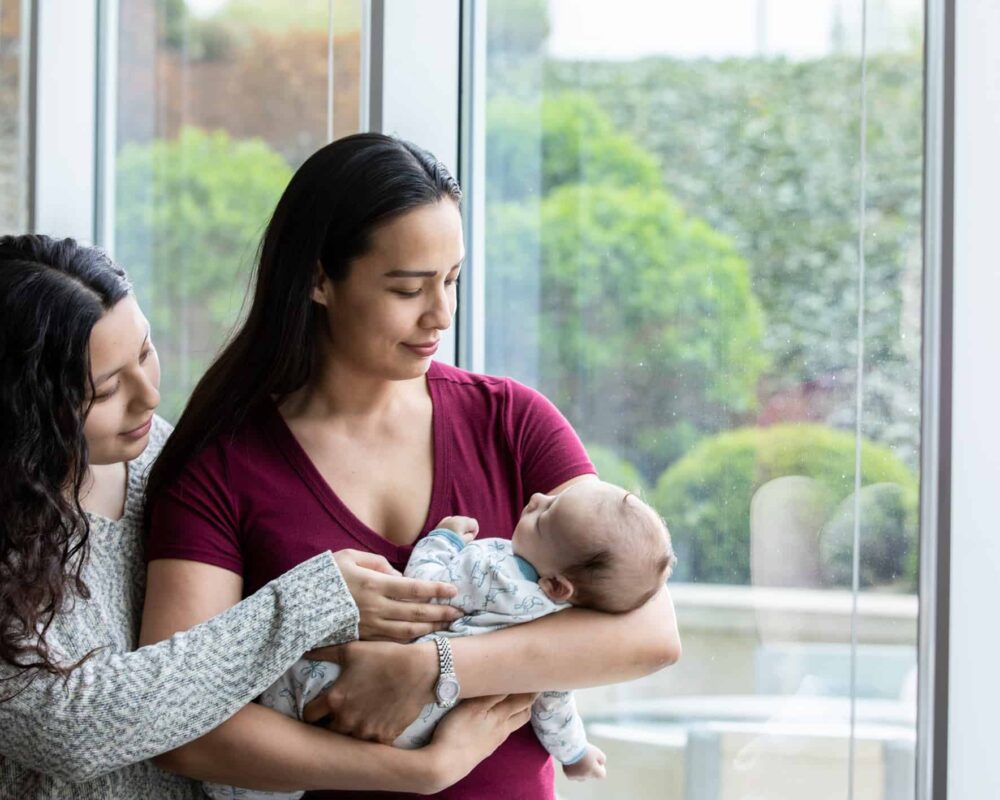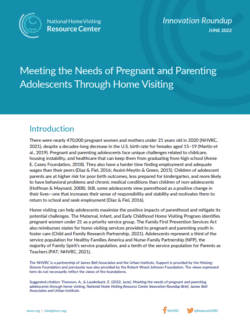
 Pregnant and parenting adolescents* face the dual challenge of raising a child while navigating their own path to adulthood. Many encounter barriers related to childcare, housing, and healthcare that can limit their job and educational opportunities. Some experience judgment and bias at home and in the community. Despite these setbacks, some adolescents view parenthood as a positive life event that bolsters their sense of responsibility and stability.** Many home visiting models support first-time parents or parents with complex needs. The Maternal, Infant, and Early Childhood Home Visiting Program identifies women under 21 as a priority service group. More can be done, however, to offer age-appropriate, engaging, and respectful home visiting services for adolescents.
Pregnant and parenting adolescents* face the dual challenge of raising a child while navigating their own path to adulthood. Many encounter barriers related to childcare, housing, and healthcare that can limit their job and educational opportunities. Some experience judgment and bias at home and in the community. Despite these setbacks, some adolescents view parenthood as a positive life event that bolsters their sense of responsibility and stability.** Many home visiting models support first-time parents or parents with complex needs. The Maternal, Infant, and Early Childhood Home Visiting Program identifies women under 21 as a priority service group. More can be done, however, to offer age-appropriate, engaging, and respectful home visiting services for adolescents.
This Innovation Roundup Brief highlights home visiting models, affiliates, and initiatives serving young parents’ needs:
- Teen Parent Connection: A Healthy Families America Affiliate
- Family Spirit
- Nurse-Family Partnership
- Show Me Strong Families (SMSF): A Parents as Teachers Initiative
It concludes with key service delivery features for consideration by other programs.
* We refer to “pregnant adolescents” and “parenting adolescents” because home visiting participants may not be teenagers by definition and to avoid any bias associated with the term “teen parents.”
**Read the References section of the brief for complete citations.
Suggested citation: Thomson, A., & Lauderback, E. (2022, June). Meeting the needs of pregnant and parenting adolescents through home visiting. National Home Visiting Resource Center Innovation Roundup Brief. James Bell Associates and Urban Institute.
Acknowledgments: We would like to thank the following individuals for sharing information about their innovations providing home visiting services for adolescents: Suzanne Baber, Missy Eymann, and Heather Moyer from Teen Parent Connection; Allison Barlow, Allie Ingalls, and Cibonay Jimenez from Family Spirit; Fran Benton and Jane Pray from Nurse-Family Partnership; and Kerry Caverly and Robin Lloyd from Parents as Teachers. Thank you to Grace Atukpawu-Tipton, Allison Meisch, Joelle Ruben, and Jill Filene at James Bell Associates and Heather Sandstrom at Urban Institute for their support shaping and refining the brief.